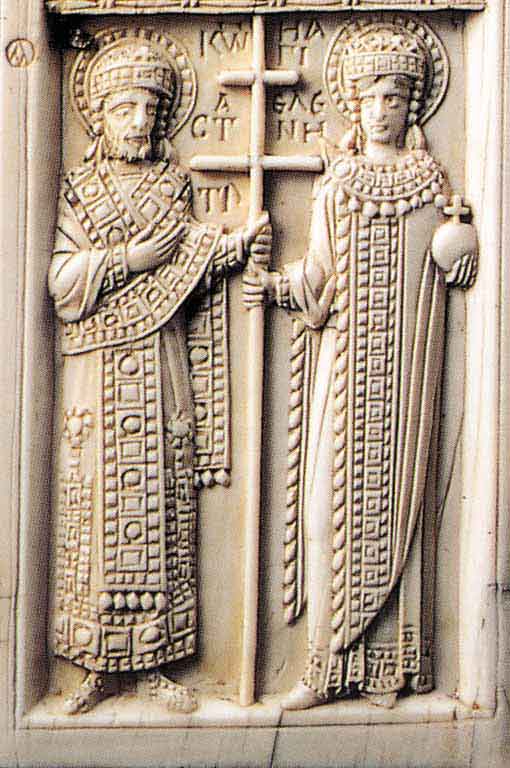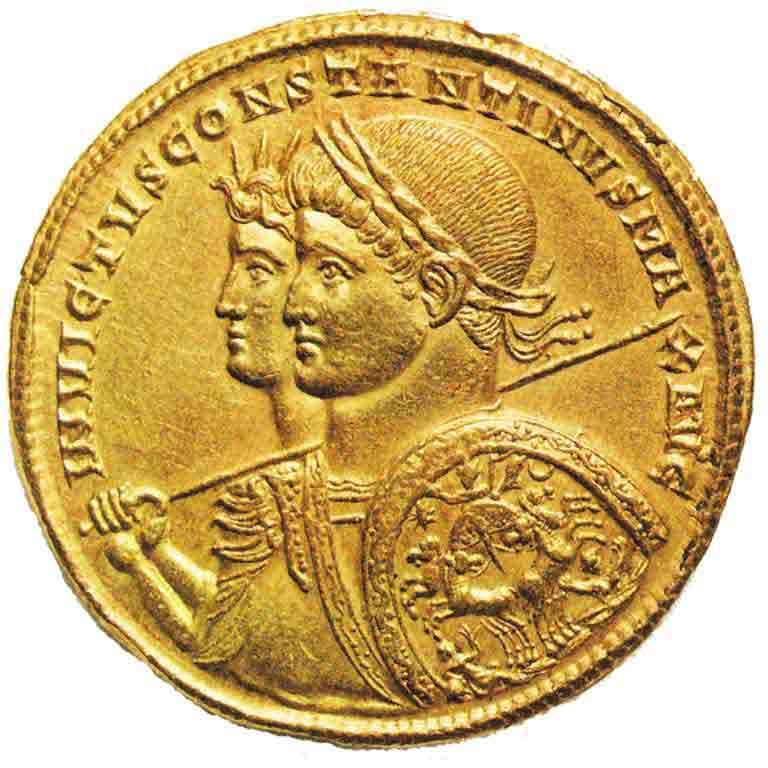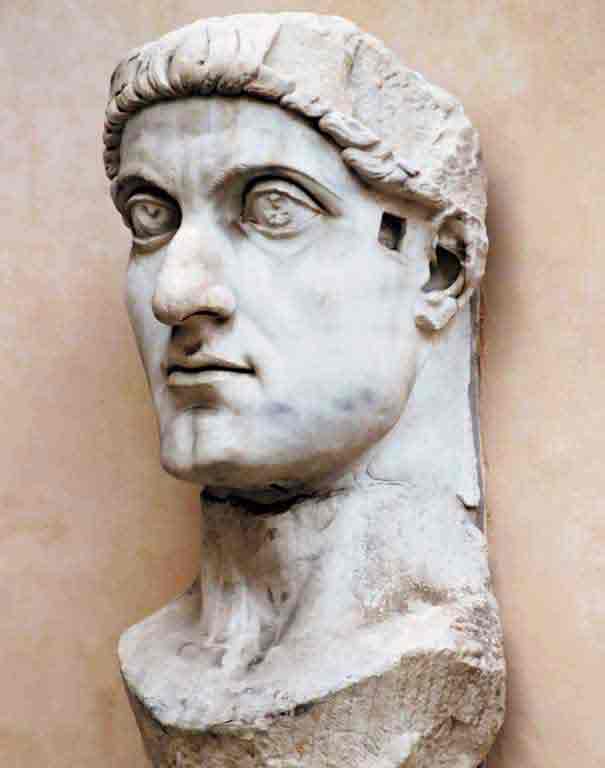|
HOME
ABOUT
TITLES
ORDER
E-MAIL
|
THE ICONOGRAPHY OF CONSTANTINE THE GREAT, EMPEROR AND SAINT
WITH ASSOCIATED STUDIES
by
CHRISTOPHER WALTER
Constantine the Great has been assiduously studied by
several scholars, but they have only sporadically shown interest in his
iconography. The present study attempts to repair this omission. It sets
out to provide a global study of his iconography from its beginnings in
Antiquity, through the Byzantine and on into the post-Byzantine epoch,
with particular reference to its significance as an expression of his
cult. The author, a specialist in iconography with numerous publications
on various subjects, is aware that a satisfactory consideration of iconographical
signs must take into account the fact that they may be polysemic or have
several connotations. In order to explain each aspect of them, he found
necessary to have recourse to the results of research by previous studies
on Constantine, e.g. theological, historical and sociological ones.
The contemporary art and portraits of Constantine and his family are first
examined from coinage, sculpture – especially the Arch of Constantine
in Rome – paintings, mosaics, sumptuary and minor objects. Attention
has then been paid to the growth of devotion to Constantine as a saint,
particularly after the Triumph of Orthodoxy, another aspect of Constantine
that has received less attention. The Invention of the Cross played an
important role in the iconography of Constantine and Helena, as the study
of their portraits in church decoration and sumptuary objects proves.
The biographical cycles of Constantine and Helena have also received an
adequate attention in this publication, to which a few practically unknown
cycles from Crete have been added.
The second part of this book, the collected articles, is devoted mainly
to a more detailed and accurate study of themes which had previously received
cursory treatment; they are besides enriched with more illustrations than
the original articles, many of which are in colour. The maniakion or torc,
known principally as an attribute of Saint Sergius and Saint Bacchus,
had, in fact, a far wider importance, as shown in the first article. A
second article deals with acronyms, particularly those associated with
the Cross. A third is the straightforward exegesis of a “message”
constructed from acronyms, rudimentary sketches of saints and cryptograms.
The three concluding articles are concerned with the so called kephalophoros
saints. They are grouped under the general title of Severed Heads and
Heads as Trophies. The introduction, a developed version of a hitherto
unpublished lecture given at the British School of Archaeology in Athens
over a decade ago, presents summarily the place of the severed head in
Antique and Western Medieval art. Three warrior saints who were represented
kephalophoros are then treated. Saint George comes first. The distinguishing
mark of a kephalophoros saint is the fact that he normally has two heads,
one on his shoulders and the other held in his hands which is offered
as a sign of triumph to Christ. Here all the examples known to the author
of Saint George kephalophoros are presented. Saint Zosimos, who follows,
is only known in one example. Finally Saint Vladimir, for various reasons,
is a special case. In the post-Byzantine period, this Medieval ruler of
Diocleia received cult, thanks to Greeks who had emigrated there from
Cyprus. His iconography, cult and influence have particularities which
are expounded here.
CONTENTS: Preface. The Iconography of Constantine
the Great, Emperor and Saint. Introduction. The Life of Constantine.
The Art of Constantine’s Reign. Constantine’s Iconography
from 337 to 843 (The Legend of Constantine, Helena and the Cross. The
Portrayal of Constantine and Helena after their Death. The Significance
of the Cross in Constantine’s Iconography). Constantine and Basil
I (Constantine’s Biographical Cycles. Appendix 1. A Saint appears
in Constantine’s Dream. Appendix 2. Constantine a warrior on horseback).
Constantine, Helena and the True Cross on Luxury Objects (1. Reliquaries.
2. Other Minor Objects on which Constantine and Helena are portrayed).
The first Council of Nicaea and the Emperor Constantine I. New Constantines.
Constantine and Helena in Crete. Associated Studies.
Introduction. The Maniakion or Torc in Byzantine Tradition. IC XC NI KA:
The Apotropaic Function of the Victorious Cross. An Apotropaic Sequence
at Kardzali. Severed Heads and Heads as Trophies (Severed Heads in Antiquity.
Severed Heads in Biblical and Early Medieval Tradition. Saint George “Kephalophoros.”
An Icon of Saint Zosimos of Sozopol. Saint John Vladimir “Kephalophoros”).
General Index. Bibliography. List of Illustrations. Illustrations 1-332.
“Soulignons
pour finir la qualité de l’édition et la richesse de l’illustration,
avec ses nombreuses images en couleur dont les éditions Alexandros Press
se sont fait une spécialité et dont on ne dira jamais assez
l’importance pour les historiens d’art.” Catherine Jolivet-Lévy, in
Revue des Etudes Byzantines, 66 (2008), 304-307.
Bound, 24x17 cm., 416 pp. (256 pp. text
plus 154 illustrations in full colour and 178
in black and white)
2006 ISBN
9789080647664
PRICE: EUR 250

Constantine and Helena from an Ivory Triptych
with the Crucifixion,Staatliche Museen, Berlin.
|

Medallion with Constantine and Sol invictus. Ticinum
(Pavia), 313 A.D. Cabinet des Médailles, Bibliothèque
Nationale, Paris.
|

Colossal head of Constantine. Marble.
Palazzo dei Conservatori, Rome. |
|



